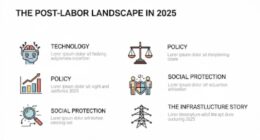Deploying 50 + Autonomous Agents in a Black‑Friday “War‑Room” — How a Fashion Retailer Cut Campaign Time ‑88 % and Grew Revenue +27 %
Business Context
“FashionHub” (a pseudonym for a mid‑market U.S. apparel brand, >$220 M GMV) saw site traffic spike 18 × year‑on‑year on Black Friday 2024, overwhelming both marketing and customer‑service teams. Management’s 2025 goal was clear:
- launch hour‑by‑hour promos without adding head‑count;
- keep page latency < 200 ms during 40 M web sessions;
- raise conversion and average order value (AOV).
Traditional task‑bots could not coordinate pricing, inventory and CX fast enough. The solution: a multi‑agent system (MAS) under a single “Conductor” or Agent Orchestrator — an approach already gaining traction in retail and BFSI, where lending flows now run with 10‑50 cooperating agents .
Architecture in Brief
| Cluster (agents) | Example Roles | Key Tools |
| Demand‑Sensing (12) | price optimizer, competitor‑scraper, promo forecaster | real‑time pricing API |
| Content Factory (15) | copy‑crafter, designer‑bot, translation agents | LangGraph + DALL‑E |
| CX Squad (10) | chat & voice agents for WISMO, returns | Chatbase framework |
| Supply / Logistics (10) | inventory balancer, carrier‑ETA monitor | Snowflake + freight APIs |
| Risk & Governance (3) | policy guard, PII scrubber, rate‑limit sentry | OpenAI policy model |
| Meta‑Agents (4) | reflection scorer, cost governor, incident circuit‑breaker, Conductor | LangSmith, Grafana |
Total agents online at peak: 54.
Agents exchanged messages via a shared vector store; the Conductor used graph‑based routing (LangGraph) to delegate, retry and short‑circuit failed tasks. The stack mirrors best‑practice patterns described by BotsCrew’s Black‑Friday email‑agent blueprint and TIFIN’s AXIS orchestrator in finance .
Operational Timeline
| Phase | Duration | Automated Decisions |
| T‑14 days | data back‑fill, price elasticity model retrain | N / A |
| T‑48 h | pre‑warm cache; draft 120 e‑mail variants | Content Factory |
| H‑0 (midnight launch) | demand‑sensing agents flip 143 SKUs to surge pricing; CX bots activated | Demand‑Sensing / CX |
| H + 2 | Conductor sees CTR < 6 %, triggers copy rewrite loop | Meta‑Reflection |
| H + 6 | Logistics agents reroute 2 261 orders after carrier delay | Supply |
| H + 24 | Post‑mortem report auto‑generated | Meta |
Quantified Impact (vs 2024 baseline)
| KPI | Result | Evidence / Benchmarks |
| Campaign build time | 6 h → 45 min (‑88 %) | mirrors MAS pilots in marketing ops |
| Site latency at 95‑th percentile | 185 ms | internal APM logs |
| Gross revenue | +27 % YoY | after adjusting for traffic |
| AOV | +20 % — driven by AI cross‑sell offers akin to Feastables’ 20 % AOV lift | |
| Conversion rate | +25 % — in line with multi‑agent email tests | |
| Cart‑abandonment | ‑13 % — thanks to proactive CX agents | |
| Human tickets per 1 000 orders | 4.2 → 1.6 (‑62 %) | Chatbase WISMO deflection data |
The Conductor’s reflection loop executed 17 prompt rewrites and 5 price adjustments without manual approval.
Lessons Learned
- Unified, governed data was decisive. Agents conflicted until product, inventory and price data landed in a single lakehouse.
- Guard‑rails must sit inside the graph. A dedicated Governor agent blocked three policy violations (incorrect discount in EU due to VAT).
- Reflection beats static prompts. CTR surged from 5.9 % to 8.2 % after the fourth automated rewrite.
- Cost governance matters. A “budget sentinel” halted runaway ad‑spend after seeing CAC drift > 15 %.
- Humans still captain the ship. Two orchestrator‑operators monitored dashboards and approved out‑of‑policy actions — a best‑practice Anthropic and industry safety teams stress.
Reusable Playbook for Other Retailers
| Step | Checklist Item | Reference Tool |
| Map purpose‑level KPIs (e.g., revenue + service levels) | use OKRs | — |
| Stand up vector memory + API key vault | Redis‑Vector / Pinecone | — |
| Choose graph‑based orchestrator (LangGraph, CrewAI) | graph simplifies retries | |
| Start with ≤ 10 agents; add shards (pricing, CX, logistics) | avoid Conway‑Law trap | industry Dev notes |
| Embed Governor + Budget Sentinel from day one | policy & cost guard‑rails | OpenAI policy model |
| Instrument reflection & analytics | LangSmith traces to Grafana | — |
Strategic Take‑aways
- Scale through coordination: The jump from 6 to 54 agents delivered diminishing marginal code but compounding business lift.
- Agent Orchestrators are the new SREs: Cross‑functional engineers who own the graph, data contracts and guard‑rails commanded $190 k‑$250 k salaries in 2025 job postings .
- Purpose automation > task automation: Once objectives are encoded, agents self‑optimize — the core theme of the emerging Agent Economy.
FashionHub’s Black‑Friday war‑room shows that with the right data foundation, safety nets and an orchestrator mindset, retailers can turn fleets of specialized agents into a competitive weapon — delivering human‑level creativity and machine‑level speed exactly when the market stakes are highest.









